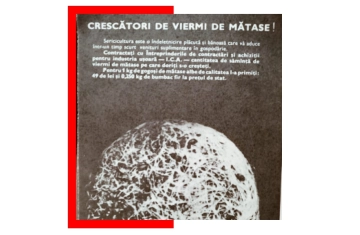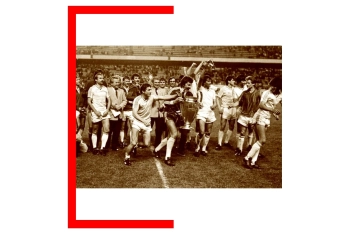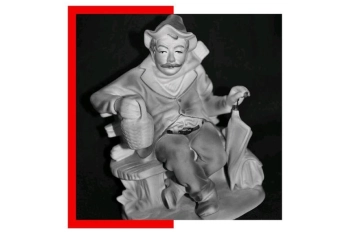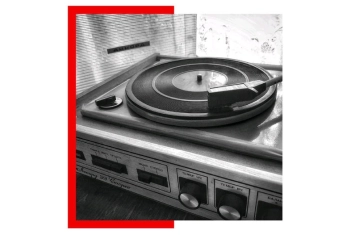The first postage stamps with the face of Nicolae Ceausescu appeared in North Korea

During the communist regime, there was a custom that the stamps issued in Romania did not include portraits of living people. There were few exceptions: I. V. Stalin, Soviet cosmonauts and American astronauts, Nadia Comaneci and Dumitru Prunariu1. Communist leaders were no exception. The Romanian Post issued a commemorative issue on the occasion of the one-year commemoration of Gheorghe Gheorghiu-Dej's death in 1966, while the USSR printed a stamp dedicated to the death of the Romanian leader in the year of his death, 1965. Even before communism was established they did not illustrate such stamps in Romania. Only the kings of Romania and the members of the royal family were exceptions. During World War II, several stamps with portraits of Hitler, Mussolini and Antonescu appeared, and after the war we mention a surprising appearance of Petru Groza as prime minister.
Returning to the communist period, we find that apart from the exceptions mentioned, only Nicolae and Elena Ceaușescu were the Romanians who had the privilege of appearing on postage stamps. In the context of the cult of personality, this fact should not surprise us. We also add the fact that the appearance of "beloved leaders" on postage stamps happened relatively late, only in 1985, when the Ceausescu couple appeared on the stamp booklet issued on the occasion of the inauguration of the Danube-Black Sea Canal. Later, several stamps dedicated to Nicolae Ceausescu were issued2.
In the context stated above, the ban of the circulation, on the Romanian territory, of a postage stamp with the face of Nicolae Ceausescu seems to be a sequence from the screening of an absurd play3. And yet this is the truth! On December 30, 1984, the Korean R. P. D. Postal Administration issued a postage stamp dedicated to the state visit of President Kim Il Sung4 to some socialist countries. The series consists of three stamp booklets, which group 1 stamp (visit to China), 3 stamps (visit to Hungary, Bulgaria and Romania) and 4 stamps (visit to the U.S.S.R., Poland, Eastern Germany and Czechoslovakia). Kim Il Sung and the country's political leader appear on each of the stamps booklet that make up the series. Thus, Nicolae Ceausescu and the North Korean president appear on the postage stamp dedicated to the visit to Romania.
For reasons still unknown, the 50 series imported by "Rompresfilatelia" from the Korean R. P. D. did not receive the "Good for Distribution" approval on the domestic philatelic market5 which was to be issued by the Philatelic Commission. Based on the Decree of the State Council no. 42 of February 6, 1985, within the Ministry of Transport and Telecommunications, the Philatelic Commission functioned, which had - among other things - the role of advising on the sale on the internal philatelic market of important stamps by the company "Rompresfilatelia"6.
The Philatelic Commission had an advisory role, its opinions being subject to the approval of the Minister of Transport and Telecommunications. The composition of the Philatelic Commission, which was established by order of the Minister of Transport and Telecommunications7 and its responsibilities, highlights the fact that this commission was only the technical executor of a higher decision-making body. We suspect that this was the Council of Socialist Culture and Education.
This notice gave the right to sell those stamps to collectors in Romania. It would be interesting to know if the R.P.D. Korean opinion was needed. The import of stamps from North Korea was the only way to introduce stamps from this country on the Romanian market, the exchanges between the collectors from the two countries being non-existent. Obviously we are dealing with disguised censorship. Due to the fact that the subject of the postage stamp in question - the portraits of the two communist leaders, Nicolae Ceausescu and Kim Il Sung - was extremely important, we are convinced that the censorship decision was taken at the highest possible level.
Censorship of a postage stamp with the portrait of Nicolae Ceausescu is undoubtedly a unique fact. The reasons behind this decision are unknown to us. The most plausible seems to be the grouping of postage stamps in the three stamp booklets of the issue, which suggests at least two categories of importance given to state visits and implicitly to the political leaders met on this occasion. China alone benefits from one booklet, while the other 7 European countries are allocated two booklets. One of the stamp booklets includes visits from Hungary, Bulgaria and Romania - countries that can be considered to be somewhat approximated as southern Europe - and the second booklet includes countries in the center of the continent: U.S.S.R., Poland, East Germany and Czechoslovakia.
It is possible that Nicolae Ceausescu did not tolerate his inclusion in the second category. Another possible reason is that until then Nicolae Ceaușescu had never appeared on Romanian postage stamps and did not want this honor to be done to him by a foreign state, in a "pack" with other communist leaders, and not by Romania. The first Romanian postage stamp with the portrait of Nicolae Ceaușescu appeared relatively quickly after the North Korean episode, in 1985. Another possibility would be that a detail of the stamp would have been considered inappropriate for the image of Nicolae Ceaușescu. The hypothesis remains purely theoretical, no such detail being identified.
After the Philatelic Commission, following some "superior indications", decided not to grant the notice of dissemination in the internal commercial network of the 50 series of postage stamps, the question of what will happen to these stamps was raised. The Minister of Transports and Telecommunications, Vasile Bulucea, requested, by note no. 137/1350/7 June 1985, addressed to the secretary of the C.C. of the P.C.R., Petru Enache8, the approval for the deposit of this issue in the “National Stamp Treasure”, which operated at that time within the National Bank of Romania. On request there is the approval of Petru Enache, a simple YES, followed by the signature. It is interesting that the note does not refer to the fact that the issue did not receive the approval for broadcasting on the domestic market, avoids the explicit mention that the stamp also shows the portrait of Nicolae Ceausescu and, moreover, presents the issue as a rarity that is worth keeping in the best conditions: “The stamps show, along with the portrait of Comrade Kim Ir Sen, portraits of party and state leaders from all countries visited. Given the small quantity (150 pieces), we propose and ask you to approve that the entire issue be handed over to the National Stamp Treasury of the Socialist Republic of Romania”9.
The involvement of high dignitaries of the communist regime seem very odd, such as the Minister of Transport and Telecommunications and the propaganda secretary of the C.C. of the P.C.R. and it does not justify the involvement of people with such high positions in the communist hierarchy. Only the presence of Nicolae Ceausescu on the postage stamps in question can explain the need for such high approvals. Normally the Minister of Transport and Telecommunications had to validate the decisions of the Philatelic Commission. Nicolae Ceausescu's portrait of the stamps in question prompted the minister to make a decision and addressed the secretary in charge with propaganda issues of the C.C. of P.C.R. It would be interesting to know whether or not he informed Nicolae Ceausescu. We suspect he did and that the final decision belonged to Nicolae Ceaușescu.
After obtaining the approval of the secretary C.C. of the P.C.R., “Rompresfilatelia”, by the address 11,740 of September 19, 1985, handed over the stamps to the National Bank of Romania, for which he requested the payment of the amount of 477.08 lei10. It was only on October 7, 1985 that the episode of the Korean stamps ended, when the Money Circulation Directorate within the National Bank of Romania requested through the internal address no. III / 2635, to the Accounting Department, the transfer of the amount of 477.08 lei to the “Rompresfilatelia” account, having the confirmation of the manager of the National Stamp Treasury that the postage stamps were handed over.
In the last decade of communism in Romania, there were other situations when the Philatelic Commission did not approve the sale of stamps imported by "Rompresfilatelia" from some socialist countries. These were the cases of some stamps from the Hungarian R. P., the Polish R. P. and the U.R.S.S. The reasons for the commercial ban are unclear in some cases, and in others the stamps do not respect the "historical truth", according to the reasoning found in the documents referring to these bans. In none of the cases, however, did the secretary in charge with propaganda issues get his approval for depositing them in the National Philatelic Treasury, which was then operating at the R.N.B., although the central bank requested this. Only in the case of Korean stamps was approval from the CC of the PCR required and this demonstrates the risks of banning the sale of stamps on which the head of state appeared.
Dr. Cristian Scăiceanu, The National Bank of Romania
1 The case of the Korean stamps with the portrait of Nicolae Ceaușescu was also presented by the author of these lines, in a restricted form, in “Censorship of some postage stamps in Romania between 1985 and 1989, in Sorin Liviu Damean et alii (coordinators),“ Permanences of history. Professor Corneliu-Mihail Lungu at the age of 70 ”, Târgoviște, Cetatea de Scaun Publishing House, 2013, pp. 777-792.
2 Kim Il-Sung (1912-1994), the "Great Leader" of the North Korean people, also known as the "Eternal President" of the Korean R. P. D., is known in Romania during the communist period under the Soviet-inspired name of Kim Ir-Sen.
3 BNR Archive, Money Circulation Fund, file no. 2/1990, p. 145.
4 Annex no. 1 to the Decree of the State Council no. 42 of February 6, 1985 (Ibidem, pp. 110-111).
5 Order of the Minister of Transport and Telecommunications no. 193 of February 3, 1989 for the appointment of the Philatelic Commission (Ibidem, pp. 107-109).
6 The mentioned quantity, 150 stamps, refers to the fact that each of the 50 booklet series contains 3 stamps.
7 BNR Archive, Money Circulation Fund, file no. 2/1990, p. 143.
8 Petru Enache (1934-1987), lathe operator by profession, Academy of Economic Sciences in Bucharest graduate, secretary with propaganda problems of the CC of the PCR (Florica Dobre (coord.), Members of the CC of the PCR: 1945-1989. Dictionary, Publishing House Encyclopedic, Bucharest, 2004). His death is considered by some sources suspicious (https://www.viata-medicala.ro/opinii/sindromul-burnout-sau-o-moarte-ajutata-7921 accessed 17.08.2020).
9 BNR Archive, Money Circulation Fund, file no. 2/1990, p. 145.
10 Ibidem, pp. 144.



